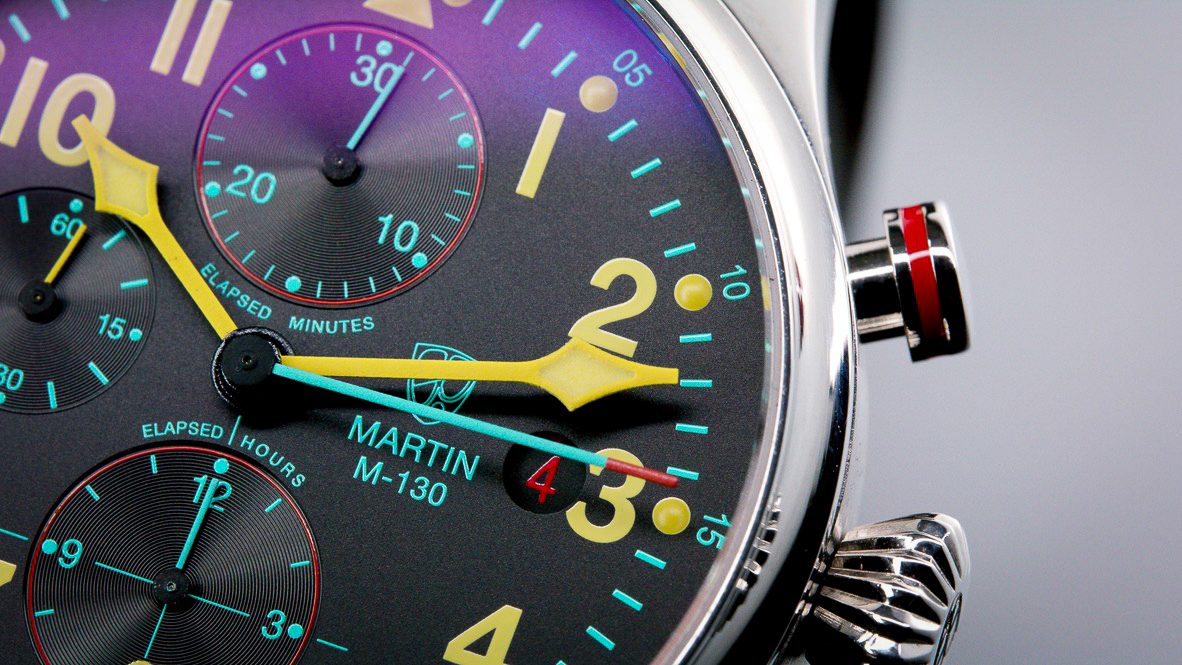Pilot watches, icons of practicality and precision, evolved predominantly into monochromatic palettes—black and white—celebrated for clarity, legibility, and efficiency. Yet, buried beneath layers of minimalist convention lies a fascinating, colorful chapter in American aviation history, one where vibrancy wasn’t mere decoration, but a deliberate and essential tool of navigation.

When Cockpits Were Colorful
In the golden age of American aviation, the cockpit was a vibrant place, rich with carefully orchestrated color schemes designed specifically to aid pilots at a glance. Far from complicating instrumentation, colors streamlined a pilot's tasks, clearly separating critical functions from standard operations. These seemingly small design decisions significantly accelerated American innovation in aviation, demonstrating that progress often meant challenging the status quo. This spirit of daring experimentation came to define the American ethos—bold, aspirational, and persistently forward-looking.
.jpg)
The Martin M-130: A Vibrant Legacy
Towson Watch Company introduced the MARTIN M-130 chronograph and its NORTH.er counterpart—two pilot watches that revive the vivid color codes of 1930s American aviation instruments. On these watches, vibrant red markings delineate essential functions—the chronograph features on the MARTIN M-130 and GMT tracking on the NORTH.er—enabling visual recognition and swift operation. Complementing the reds, luminous yellow hands and markers highlight standard timekeeping functions, creating harmony through clear and practical contrast.
But why these colors? The watches pay direct homage to a historical timepiece: the cockpit clock from the Martin M-130 Flying Boat, constructed in Baltimore, Maryland, in 1935. Known affectionately as the "China Clipper," this groundbreaking aircraft was the first plane to traverse the vast Pacific Ocean, opening the skies to commercial flight and symbolizing American ambition and ingenuity.

A Uniquely American Revival
The introduction of vibrant color schemes wasn’t merely a stylistic flourish but a uniquely American design solution born out of practicality. So why then did the modern pilot watch abandon these functional colors in favor of monotone simplicity?
Perhaps the answer is simpler than expected: Americans haven't produced many pilot watches in recent decades. At Towson Watch Company, our aim is clear: to resurrect this lost era of vibrant yet purposeful American watch design. Through the MARTIN M-130 and the NORTH.er, we’re proudly reclaiming a distinctively American tradition—one of thoughtful rebellion, bold creativity, and purposeful innovation.

Explore the MARTIN M-130 and NORTH.er to rediscover what American watchmaking truly looks like—rooted in color, clarity, and courageous design. Add one to your collection to own a piece of the story.

Watch Now: A Review of the Martin M-130 by OFD Watch Reviews
Watch Now: A Review of the Martin M-130 by Marshall Time
Read Now: A Review of the Martin M-130 by the WatchClicker
Read Now: A Review of the NORTH.er by "Time to Blog Watches"





.jpg)
